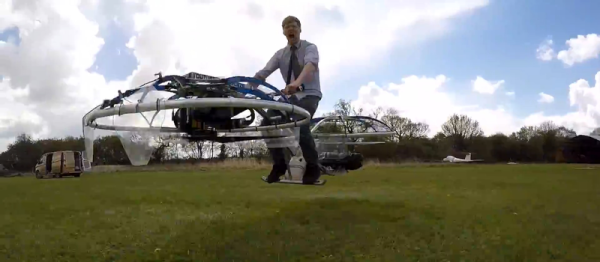Remember when you first saw a USB port in a standard wall outlet? It was a really great idea at the time, but how’s that 500mA charge holding up now? Fresh from a random press release, here’s a USB 3.0 wall outlet, with USB A and C ports. 5A @ 5V. Future proof for at least several years, I guess.
This is what you call ‘pucker factor’. An Air France A380 traveling from CDG to LAX suffered an uncontained engine failure somewhere over Greenland. Everyone on board is fine, except for the fact they had to spend the night in Goose Bay, Canada. Want the best Twitter/YouTube account of being a passenger? Here you go. Want to know why it landed in Goose Bay? This video is about ETOPS which really doesn’t apply in this instance but it’s a sufficient introduction to diverting airplanes after engine failures.
There are mysterious pylons going up alongside bridges and tunnels in NYC (auto-playing video). No one knows what they are, and the transportation board for New York is hiding behind a cloud of secrecy. We do know there are ‘fiber optics necessary for Homeland Security items’ inside, so place your bets. It’s facial recognition, or at the very least license plate readers. You know, exactly what New York and dozens of other cities have been doing for years.
Did somebody lose a balloon? A Raspberry Pi high-altitude balloon was found on the beach in south-west Denmark.
[Peter] is building an ultralight in his basement. We’ve covered the first part of the build, and we’ve been keeping tabs on him with semi-weekly updates. Now he’s fiberglassed the fuselage and started construction of the wings. Updates of note this week: he’s found a shop with an 8-foot CNC hot wire cutter for the wings. That really cuts down on the build time and it’s actually pretty cheap. One interesting part of this build is a ‘landing gear ejection system’, or a spring thing that allows the landing gear to fall away with the tug of a wire. Why would anyone want a landing gear ejection system? In case he needs to land in a soybean field. A flat bottom means a smoother and more survivable landing. If anyone is still concerned about [Peter]’s safety, this is a put up or shut up situation. Pitch in ten bucks for a parachute if you’re so concerned.
Hoverbike Kalashnikov! What? It’s a guy’s name. No big deal.
Open Hardware Summit is this week in Denver. What will be the highlights of the event? Well, last year, OSHWA announced the creation of an Open Hardware license. This is an all-encompassing license for Open Source Hardware that’s trying to solve some very, very hard problems. Copyright doesn’t work with hardware (except for boat hulls) like it does with software, and this Open Hardware license is the best we’ve got going for us. We’re going to get an update on how well this license is propagating. Also on deck for Summit attendees is a field trip to Sparkfun and Lulzbot. Want to see the world’s second largest 3D printer bot farm? It’ll be awesome.
















